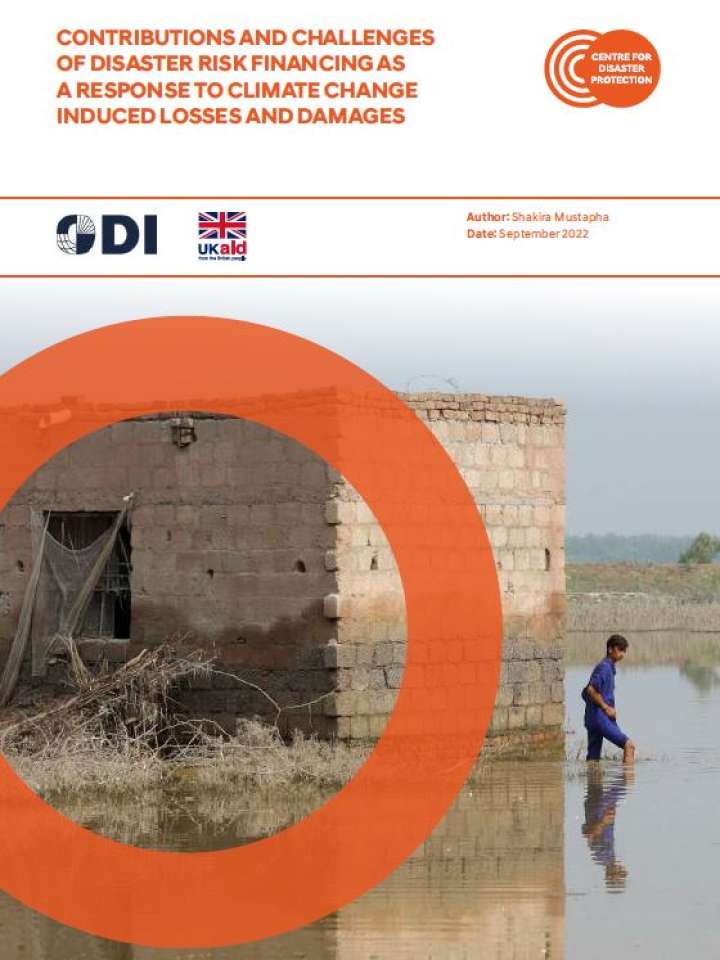Contributions and challenges of disaster risk financing as a response to climate change induced losses and damages
This paper explores how DRF instruments are being framed and understood within the panorama of Loss and Damage policy and finance agendas, highlighting areas of contention and sensitivity. Human-induced climate change will continue to cause losses and damages, with vulnerable developing countries and communities that have contributed least to the climate crisis bearing the brunt of its consequences. Loss and Damage is the third pillar of the international climate regime in the 2015 Paris Agreement, alongside mitigation and adaptation. In order to play a well-targeted and effective role, it is important to understand the applications and limits of Disaster Risk Finance as a response to climate-induced losses and damages.
The paper concludes with the following recommendations:
- Be aware that words matter. Key terms and concepts used widely such as “losses and damages”, “addressing loss and damage” and “compensation” lack precise definitions and can be used and interpreted differently by different stakeholders.
- Be mindful that “who pays” for DRF is a highly politically contentious matter. The question of who can and should ultimately pay for DRF falls squarely in the highly charged political debate centred around climate justice.
- Recognise that insurance has clear limitations for addressing Loss and Damage. Insurance has a specific role and, as with all things, must be used in the right way to maximize benefit.
- Position insurance as part of a wider risklayering approach to address Loss and Damage. There is no single solution to Loss and Damage and insurance is best viewed as part of a holistic climate risk management approach.
- Continue to build evidence, undertake research and focus on learning to stimulate an informed and nuanced debate and improve the design of instruments to better catalyse risk reduction and adaptation.
Explore further
